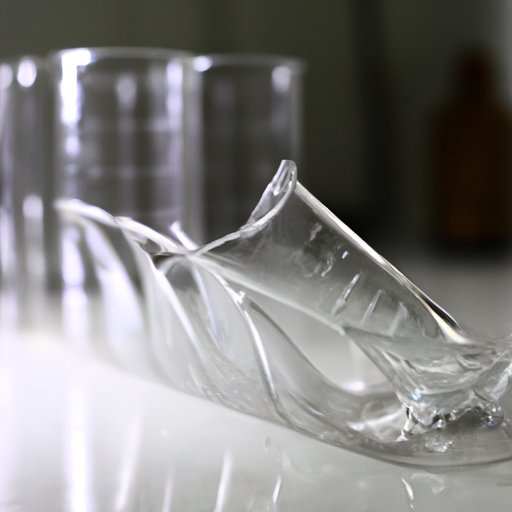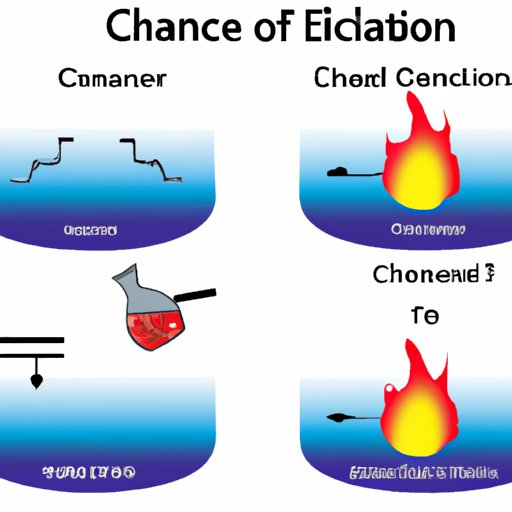
Introduction
Chemical and physical changes are fundamental concepts in science that help us understand how the world around us works. A chemical change is a process that results in the formation of a new substance with different properties, while a physical change is a process that changes the physical properties of a substance without changing its chemical composition. It’s important to distinguish between the two types of changes to better understand how different systems work, from cooking to medicine to the environment.
Chemical vs Physical Changes: What’s the Difference?
In terms of energy, chemical changes usually involve the absorption or release of heat or light, while physical changes require a transfer of energy to change the substance’s physical state. In terms of forming new substances, chemical changes always result in the formation of a new substance with different properties. In physical changes, the composition of the substance remains the same even though its physical properties change. Finally, whether a change is reversible or not is a key factor in identifying the type of change. Physical changes are usually reversible, while chemical changes are often irreversible.
The Science of Cooking: Chemical vs Physical Changes in the Kitchen
Cooking is a great way to explore the differences between chemical and physical changes since many changes happen to food during the cooking process. Browning meat is an example of a chemical change because the heat causes a chemical reaction that changes the meat’s texture and flavor. On the other hand, melting butter is a physical change because it changes the physical state from a solid to a liquid without changing the butter’s chemical composition. Cooking also involves chemical changes, such as the Maillard reaction, which is responsible for the flavor and aroma of roasted coffee and bread.
Identifying Chemical and Physical Changes: A Guide for Students
Some common examples of physical changes include freezing, melting, and boiling water, changing the shape of a piece of clay, and cutting paper into smaller pieces. On the other hand, examples of chemical changes include burning wood, fermenting grapes to make wine, and baking a cake. Tips for recognizing chemical and physical changes in everyday life include looking for signs of a chemical reaction, such as bubbles, color changes, and heat or light being produced. Physical changes, on the other hand, are often more subtle and involve changes in physical state or shape without changing the substance’s identity.
The Environmental Impact of Chemical and Physical Changes
Chemical changes can have a significant impact on the environment because they often produce pollutants or hazardous waste. Examples include industrial processes such as mining and refining metals, which can produce toxic chemicals such as lead and mercury. Physical changes, on the other hand, are often more reversible and less harmful. However, some physical changes, such as erosion caused by weathering, can cause long-term and cumulative environmental impact.
Chemical Changes and Health: Understanding the Effects of Drugs on the Body
When it comes to medicine, understanding chemical changes is crucial. When we consume drugs, they undergo a series of chemical changes in our bodies that affect their efficacy and potential side effects. One example is the breakdown of drugs into metabolites, which can be more or less potent than the original drug and can have different effects on the body. Understanding chemical changes in drugs can help doctors prescribe the right medication and avoid harmful combinations of drugs.

When to Call a Chemical Change a Chemical Reaction
When a chemical change results in the formation of a new substance with different properties, it’s considered a chemical reaction. Some criteria for identifying a chemical reaction include the production of gas, a temperature change, or a color change. Other types of chemical changes that don’t result in a new substance being formed include acid-base reactions or redox reactions, which involve the transfer of electrons between molecules.
Physical Changes and Everyday Objects: Understanding the Properties of Matter
Physical changes can have a profound impact on the properties of everyday objects. For example, shaping a piece of metal into a wire changes its physical properties, including its ability to conduct electricity and its tensile strength. Physical changes can also affect other properties, such as melting point, boiling point, and solubility. Understanding the physical properties of matter is essential to fields such as materials science and engineering, which rely on manipulating and optimizing those properties to create new substances and technologies.
Conclusion
Understanding the difference between chemical and physical changes is essential to many fields of study, from cooking and medicine to engineering and environmental science. While the concepts may seem abstract at first, they have real-world implications that are critical to our daily lives. By recognizing the signs of chemical and physical changes, we can better understand the world around us and make informed decisions that affect our health, the environment, and the technologies we rely on every day.





